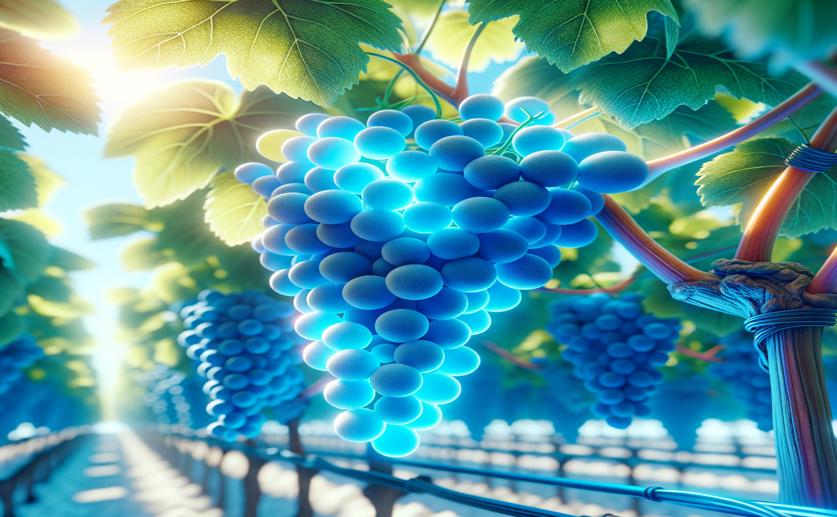
Daytime Blue LED Light Boosts Berry Skin Antioxidants in Grapevines
Jenn Hoskins
11th August, 2024

Image Source: Natural Science News, 2024
Key Findings
- The study by the Chinese Academy of Sciences found that blue LED light during the day (8:00 to 18:00) accelerates grape berry coloration and increases anthocyanin content
- Blue LED light at night (20:00 to 6:00) did not significantly enhance anthocyanin accumulation compared to the control
- Daytime blue light exposure boosts the expression of genes related to anthocyanin biosynthesis and light signaling, suggesting a regulatory mechanism influenced by light conditions
AgricultureBiochemPlant Science
References
Main Study
1) Supplementing with monochromatic blue LED light during the day, rather than at night, increases anthocyanins in the berry skin of grapevine (Vitis vinifera L.).
Published 10th August, 2024
https://doi.org/10.1007/s00425-024-04500-4
Related Studies
2) Flavonoid biosynthesis-related genes in grape skin are differentially regulated by temperature and light conditions.
Journal: Planta, Issue: Vol 236, Issue 4, Oct 2012
3) The clock protein CCA1 and the bZIP transcription factor HY5 physically interact to regulate gene expression in Arabidopsis.
4) Loss of Diel Circadian Clock Gene Cycling Is a Part of Grape Berry Ripening.
5) Long-term in vitro culture of grape berries and its application to assess the effects of sugar supply on anthocyanin accumulation.



 8th August, 2024 | Jim Crocker
8th August, 2024 | Jim Crocker